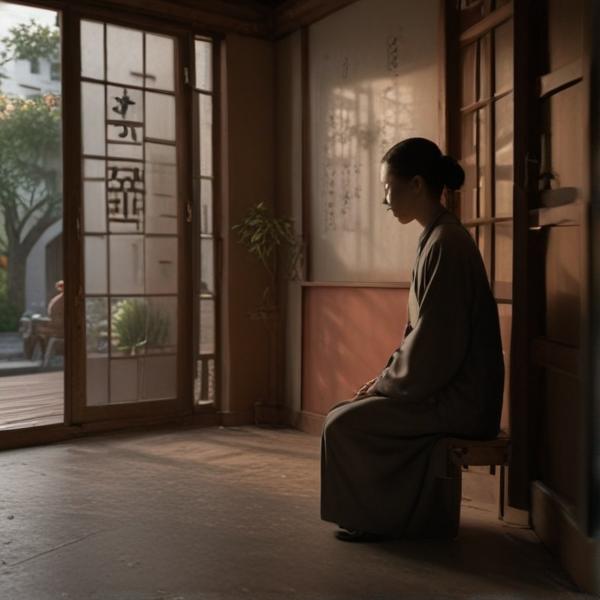基本信息 (Basic Information)
含义与用法 (Meanings & Usage)
中文核心释义 (Core Chinese Meaning): 表示感叹、惊讶、提醒等语气的叹词。
英文核心释义 (Core English Meaning): An interjection used to express exclamation, surprise, or to call attention.
象形意义 / 为何这么写 (Pictographic Meaning / Writing Rationale)
文言文释义 (Classical Chinese Meaning)
与现代意义相近,主要是作为表达感情的口头语气词使用。Similar to modern meaning; mainly used in classical Chinese as an oral exclamatory particle.
深入学习 (In-depth Study)
字源故事 (Origin Story)
字形演变 (Character Evolution)
常用词语和例句 (Common Words & Examples)
哟 (yo; wow; hey (an exclamatory particle))
哟,你怎么在这里?
Eng: Oh, how come you are here?
哎哟 (ouch; gosh (expressing surprise or pain))
哎哟,我的手被烫到了!
Eng: Ouch, my hand got burned!
相关成语 (Related Idioms)
相关成语信息待补充。Related idiom information pending.
多语言翻译 (核心释义) (Translations (Core Meaning))
- French: Oh ; Hé ; Interjection d’étonnement ou d’exclamation
- German: Oh; Ach; Ausruf der Überraschung oder des Hinweises
- Spanish: ¡Oh!; ¡Vaya!; Interjección de sorpresa o advertencia
- Italian: Oh; Ehi; Interiezione di sorpresa o richiamo
- Portuguese: Oh; Ei; Interjeição de surpresa ou aviso
- Russian: Ой; Ах; междометие удивления или предостережения
- Arabic: يا؛ أوه؛ أداة تعجب أو تنبيه
- Persian: او!؛ هان!؛ واژه تعجب یا هشدار
- Dutch: Oh; Hé; Tussenwerpsel voor verrassing of aandacht
- Polish: O!; Ej!; Wykrzyknik zaskoczenia lub ostrzeżenia
- Vietnamese: Ồ; Ê; Từ cảm thán diễn tả ngạc nhiên hoặc nhắc nhở
- Ukrainian: Ой; Ах; вигук здивування чи застереження
视频学习资源 (Video Learning Resources)
通过以下链接在热门视频网站搜索 "哟" 的更多讲解:
Search for more explanations of "哟" on popular video sites:
- 在 Bilibili.com 搜索 "哟 字源 说文解字" (Search on Bilibili)
- 在 YouTube.com 搜索 "哟 character origin etymology" (Search on YouTube)
网络参考 (Web References for "哟") ()
网络内容摘要 (Web Content Summary):
哟(拼音:yō)是一个常用汉字,常作为语气词,表达惊讶、提醒、亲切或感叹等语气。例如:“哟,你来了!”。 哟 (pinyin: yō) is a common Chinese character, mainly used as an interjection to express surprise, remind, affection, or exclamation. For example: "Yo, you’re here!"
-
核心含义与起源:“哟”本身没有独立实义,主要用于口语,带有情感色彩。其形来自于“口”(表示与发声有关)和“约”或“予”等组成,突出了语气词的表达特点。 Core Meaning and Origin: "哟" does not have an independent meaning; it is mainly used in spoken language to add emotional nuance. Its structure includes the "口" (mouth) radical, indicating relation to speech or sound.
-
用法与易混淆点:“哟”常与类似语气词如“呀”“啊”“哦”等一起出现,表达的感情程度或场合有所不同,学习者需要体会其具体语境。 Usage and Easily Confused Points: "哟" is often used with other interjections like "呀", "啊", or "哦". Each expresses different levels or types of emotion; it's important to understand the context for proper use.
-
常用搭配:多见于口语与对话,如“咦哟”、“哟呵”,也可用作惊叹词开头加强语气。 Common Collocations: Frequently appears in spoken Chinese and conversations, such as "咦哟" or "哟呵", and can be placed at the beginning of a sentence to strengthen the tone.
目前暂无深入文化典故或成语与“哟”直接相关,主要作用为增强语气。 There are currently no notable idioms or cultural stories directly related to "哟"; its main function is to enhance the tone of speech.
哟的解释|哟的意思|汉典"哟"字的基本解释 - 漢典
"哟"字的解释,释义,异体字,音韵方言,部首笔画,康熙字典,说文解字,字源字形
汉字源流_好字典
汉字是世界上唯一的古代一直演变过来没有间断过的文字形式。好字典提供两万多常用汉字的字源图解图片,以图文并茂的形式诠释汉字由甲骨文、金文、小篆、隶书到现代汉字的起源和演变过程,同时通过形象地形体分析,具体地解释了每个字的字形与字义的内在关系,并且系统地介绍了关于汉字 ...
更多图片 (哟 More Images) ()
